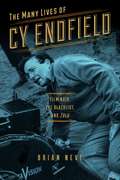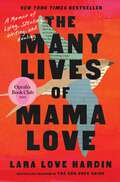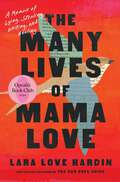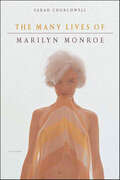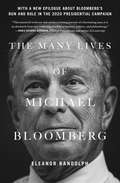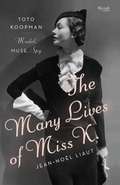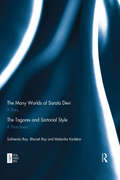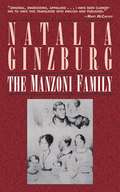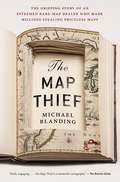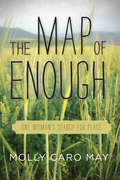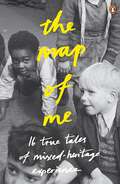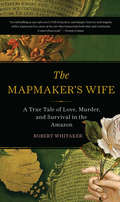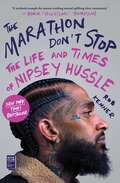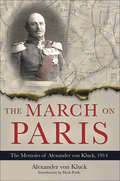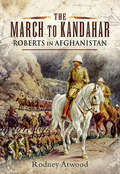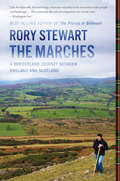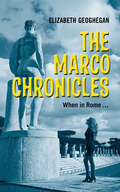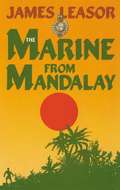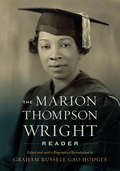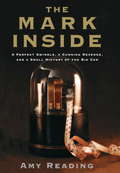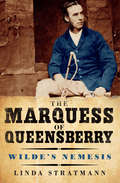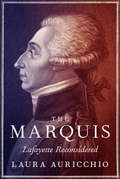- Table View
- List View
The Many Lives of Cy Endfield
by Brian NeveCy Endfield (1914-1995) was a filmmaker who was also fascinated by the worlds of close-up magic, science, and invention. After directing several distinctive low-budget films in Hollywood, he was blacklisted in 1951 and fled to Britain rather than "name names” before HUAC, the U. S. House of Representatives’ Un-American Activities Committee. The Pennsylvania-born Endfield made films that exhibit an outsider’s eye for his adopted country, including the working-class "trucking” drama Hell Drivers and the cult film Zulu--a war epic as politically nuanced as it is spectacular. Along the way he encountered Orson Welles, collaborated with pioneering animator Ray Harryhausen, published a book of his card magic, and co-invented an early word processor that anticipated today’s technology. The Many Lives of Cy Endfield is the first book on this fascinating figure. The fruit of years of archival research and personal interviews by Brian Neve, it documents Endfield’s many identities: among them second-generation immigrant, Jew, Communist, and exile. Neve paints detailed scenes not only of the political and personal dramas of the blacklist era, but also of the attempts by Hollywood directors in the postwar 1940s and early 1950s to address social and political controversies of the day. Out of these efforts came two crime melodramas (what would become known as film noir) on inequalities of class and race: The Underworld Story and The Sound of Fury (also known as Try and Get Me!). Neve reveals the complex production and reception histories of Endfield’s films, which the critic Jonathan Rosenbaum saw as reflective of "an uncommon intelligence so radically critical of the world we live in that it’s dangerous. ” The Many Lives of Cy Endfield is at once a revealing biography of an independent, protean figure, an insight into film industry struggles, and a sensitive and informed study of an underappreciated body of work.
The Many Lives of Mama Love (Oprah's Book Club): A Memoir of Lying, Stealing, Writing, and Healing
by Lara Love Hardin&“Once you start reading, be prepared, because you won&’t want to stop.&” —Oprah Winfrey OPRAH&’S BOOK CLUB PICK • New York Times bestselling author Lara Love Hardin recounts her slide from soccer mom to opioid addict to jailhouse shot caller and her unlikely comeback as a highly successful ghostwriter in this harrowing, hilarious, no-holds-barred memoir.No one expects the police to knock on the door of the million-dollar two-story home of the perfect cul-de-sac housewife. But soccer mom Lara Love Hardin has been hiding a shady secret: she is funding her heroin addiction by stealing her neighbors&’ credit cards. Lara is convicted of thirty-two felonies and becomes inmate S32179. She finds that jail is a class system with a power structure that is somewhere between an adolescent sleepover party and Lord of the Flies. Furniture is made from tampon boxes, and Snickers bars are currency. But Lara quickly learns the rules and brings love and healing to her fellow inmates as she climbs the social ladder and acquires the nickname &“Mama Love,&” showing that jailhouse politics aren&’t that different from the PTA meetings she used to attend. When she&’s released, she reinvents herself as a ghostwriter. Now, she&’s legally co-opting other people&’s identities and getting to meet Oprah, meditate with the Dalai Lama, and have dinner with Archbishop Desmond Tutu. But the shadow of her past follows her. Shame is a poison worse than heroin—there is no way to detox. Lara must learn how to forgive herself and others, navigate life as a felon on probation, and prove to herself that she is more good than bad, among other essential lessons. The Many Lives of Mama Love is a heartbreaking and tender journey from shame to redemption, despite a system that makes it almost impossible for us to move beyond the worst thing we have ever done.
The Many Lives of Mama Love: A Prison Journey - To Hell and Back
by Lara Love Hardin'Lara Love Hardin shares compelling and important truths in her beautifully told personal story.' PIPER KERMAN, author of the no. 1 New York Times bestseller Orange is the New Black'Thrilling, funny, heartbreaking and moving. I'll return to this book when I need to be reminded of the power of the human spirit.' DAVID SHEFF, author of the no. 1 New York Times bestseller Beautiful Boy'Compelling and timely' BRYAN STEVENSON, author of the New York Times bestseller Just MercyThe Neighbour From Hell is the astonishing tale of Lara's descent from middle class soccer mum with an enviable lifestyle, beautiful home and family to an opiate addict and identity thief. Convicted of 32 felonies, her children are taken away and she is placed in a local jail.In this strange and frightening new world, she has to get grips with life behind bars. Lara becomes known in prison as Mama Love. She helps the women around her get to grips with their own troubles, writes letters for them, acts as an advocate, and comforts them in their darkest moments. Soon she climbs the jailhouse social ladder to become 'the shot caller' showing that jailhouse politics and PTA politics are not that different.Through her incarceration, Lara reveals a world where makeshift furniture is made from tampon boxes and snicker bars are currency, a world of brutal corruption and abuse, and of surprising humanity and tenderness.Her story gives us a rare glimpse into the lives of the women in jail she spent time with and the very real challenges they, and she, faced trying to make it out of prison, regain custody of their children and start life afresh.
The Many Lives of Marilyn Monroe
by Sarah ChurchwellA brilliant investigation into the debates surrounding Marilyn Monroe's life and the cultural attitudes that her legend revealsThere are many Marilyns: sex goddess and innocent child, crafty manipulator and dumb blonde, liberated woman and tragic loner. Indeed, the writing and rewriting of this endlessly intriguing icon's life has produced more than six hundred books, from the long procession of "authoritative" biographies to the memoirs and plays by ex-husband Arthur Miller and the works by Norman Mailer and Joyce Carol Oates. But even as the books have multiplied, myth, reality, fact, fiction, and gossip have become only more intertwined; there is still no agreement about such fundamental questions as Marilyn's given name, the identity of her father, whether she was molested as a child, and how and why she died.The Many Lives of Marilyn Monroe reviews the unreliable and unverifiable-but highly significant-stories that have framed the greatest Hollywood legend. All the while, cultural critic Sarah Churchwell reveals us to ourselves: our conflicted views on women, our tormented sexual attitudes, our ambivalence about success, our fascination with self-destruction.In incisive and passionate prose, Churchwell uncovers the shame, belittlement, and anxiety that we bring to the story of a woman we supposedly adore. In the process, she rescues a Marilyn Monroe who is far more complicated and credible than the one we think we know.
The Many Lives of Michael Bloomberg: Innovation, Money, And Politics
by Eleanor RandolphWith unprecedented access, the veteran New York Times reporter and editorial writer who covered New York City and state politics offers a revealing portrait of one of the richest and famously private/public figures in the country. Business genius, inventor, innovator, publisher, philanthropist, activist, and sly wit Michael Bloomberg.Michael Bloomberg’s life sounds like an exaggerated version of The American Story, except his adventures are real. From modest Jewish middle class (and Eagle Scout) to Harvard MBA to Salomon Brothers hot shot (where he gets “sent upstairs” and later fired) to creator of the machine that would change Wall Street and the rest of the world and make him a billionaire (a description by the author makes the invention clear to non-engineers). Randolph’s account of Bloomberg’s life and time reads almost like a novel, a quintessentially American story. She explains the “machine” he invented that gave and continues to give instant access to an infinite amount of information to bankers and investors on how, what, and where to invest, and how it changed the financial universe. Randolph recounts one day not long ago when the Bloomberg machine briefly blipped and the whole world’s financial marketplace came to a halt. Randolph recounts Mayor Bloomberg’s vigorous approach to New York city’s care—including his attempts at education reform, contract control, anti-smoking and anti-obesity campaigns, green climate control, and his political adventures with both aides and opponents. After a surprising third term as Mayor, Bloomberg returned to his business and doubles its already tremendous worth. The chapter that describes this is one of the most revealing of his temperament and energy and vision as well as how he spends his “private” time—private but convivial. Bloomberg’s philanthropies are education, anti-NRA, and supporting a cleaner environment. He is a moderate liberal in a time when that quality holds the future of the Democratic Party and the country to account.
The Many Lives of Miss K: Toto Koopman - Model, Muse, Spy
by Jean-Noel Liaut Denise Raab JacobsA life of glamour and tragedy, set against the watershed cultural and political movements of twentieth-century Europe. "Toto" Koopman (1908-1991) is a new addition to the set of iconoclastic women whose biographies intrigue and inspire modern-day readers. Like her contemporaries Lee Miller or Vita Sackville-West, Toto lived with an independent spirit more typical of the men of her generation, moving in the worlds of fashion, society, art, and politics with an insouciant ease that would stir both admiration and envy even today. Sphinxlike and tantalizing, Toto conducted her life as a game, driven by audacity and style. Jean-Noël Liaut chases his enigmatic subject through the many roles and lives she inhabited, both happy and tragic. Though her beauty, charisma, and taste for the extraordinary made her an exuberant fixture of Paris fashion and café society, her intelligence and steely sense of self drove her toward bigger things, culminating in espionage during WWII, for which she was imprisoned by the Nazis in Ravensbruck. After the horrors of the camp, she found solace in Erica Brausen, the German art dealer who launched the career of Francis Bacon, and the two women lived out their lives together surrounded by cultural luminaries like Edmonde Charles-Roux and Luchino Visconti. But even in her later decades, Toto remained impossible for anyone to possess. The Many Lives of Miss K explores the allure of a freethinking and courageous woman who, fiercely protective of her independence, was sought after by so many but ultimately known by very few.
The Many Worlds of Sarala Devi: A Diary & The Tagores and Sartorial Style: A Photo Essay
by Malavika Karlekar Sukhendu Ray Bharati RayThis charming book The Many Worlds of Sarala Devi and The Tagores and Sartorial Styles, as the titles suggest, contain two separate but related writings on the Tagores. The Tagores were a pre-eminent family which became synonymous with the cultural regeneration of India, specifically of Bengal, in the nineteenth century. The first writing is a sensitive translation of Sarala Devis memoirs from the Bengali, Jeevaner Jharapata, by Sukhendu Ray. It is the first autobiography written by a nationalist woman leader of India. Sarala Devi was Rabindranath Tagores niece and had an unusual life. The translation unfolds, among other things, what it was like to grow up in a big affluent house Jorasanko, that had more than 116 inmates and a dozen cooks! The second writing by Malavika Karlekar is a photo essay, creatively conceived, visually reflecting the social and cultural trends of the times, through styles of dress, jewellery and accoutrements. The modern style of wearing a sari was introduced by Jnanadanandini Devi, a member of the Tagore family. The introduction by the well-known historian, Bharati Ray, very perceptively captures the larger context of family, marriage, womens education and politics of the time which touched Sarala Devis life. She points out that if memoirs are a kind of social history then womens diaries record social influences not found in official accounts and are therefore, a rich source of documentation.
The Manzoni Family: A Novel
by Natalia GinzburgWinner of the Bagutta Prize, The Manzoni Family set in ducal Italy and post-revolutionary France, captures the story of Alessandro Manzoni—celebrated Milanese nobleman, man of letters, and author of the masterpiece of nineteenth-century Italian literature, I promessi sposi (The Betrothed)—and the women of his life. The dynastic tale begins with the matriarchal figure of Giulia, the mother whom the young Alessandro Manzoni found in Paris after she had abandoned him as an infant. Following her, there is Enrichetta, the woman he and his mother chose to be his wife, and the many children she had by him until her death; literary friends from the beau monde in Italy and Paris; and Alessandro's second wife, Teresa, and her children. Against the background of Napoleonic occupation, the reestablishment of Austrian hegemony, and the stirrings of the revolutionary urge for unification and independence, Ginzburg gracefully weaves the story of the Manzoni dynasty, a family that seems to grow autonomously around the life of the writer, effortlessly incorporating the epic tumult and emotion of the age. Ginzburg explores this fascinating true story and celebrated author with the elegance that has assured her rightful place among history’s acclaimed literary titans.
The Map Thief: The Gripping Story of an Esteemed Rare-Map Dealer Who Made Millions Stealing Priceless Maps
by Michael BlandingThe story of an infamous crime, a revered map dealer with an unsavory secret, and the ruthless subculture that consumed him Maps have long exerted a special fascination on viewers—both as beautiful works of art and as practical tools to navigate the world. But to those who collect them, the map trade can be a cutthroat business, inhabited by quirky and sometimes disreputable characters in search of a finite number of extremely rare objects. Once considered a respectable antiquarian map dealer, E. Forbes Smiley spent years doubling as a map thief —until he was finally arrested slipping maps out of books in the Yale University library. The Map Thief delves into the untold history of this fascinating high-stakes criminal and the inside story of the industry that consumed him. Acclaimed reporter Michael Blanding has interviewed all the key players in this stranger-than-fiction story, and shares the fascinating histories of maps that charted the New World, and how they went from being practical instruments to quirky heirlooms to highly coveted objects. Though pieces of the map theft story have been written before, Blanding is the first reporter to explore the story in full—and had the rare privilege of having access to Smiley himself after he’d gone silent in the wake of his crimes. Moreover, although Smiley swears he has admitted to all of the maps he stole, libraries claim he stole hundreds more—and offer intriguing clues to prove it. Now, through a series of exclusive interviews with Smiley and other key individuals, Blanding teases out an astonishing tale of destruction and redemption. The Map Thief interweaves Smiley’s escapades with the stories of the explorers and mapmakers he knew better than anyone. Tracking a series of thefts as brazen as the art heists in Provenance and a subculture as obsessive as the oenophiles in The Billionaire’s Vinegar, Blanding has pieced together an unforgettable story of high-stakes crime.
The Map of Enough: One Woman's Search for Place
by Molly MayMolly Caro May grew up as part of a nomadic family, one proud of their international sensibilities, a tribe that never settled in one place for very long. Growing up moving from foreign country to foreign country, just like her father and grandfather, she became attached to her identity as a global woman from nowhere. But, on the verge of turning thirty years old, everything changed.Molly and her fiancé Chris suddenly move to 107 acres in Montana, land her family owns but rarely visits, with the idea of staying for only a year. Surrounded by tall grass, deep woods, and the presence of predators, the young couple starts the challenging and often messy process of building a traditional Mongolian yurt from scratch. They finally finish just on the cusp of winter, in a below-zero degree snowstorm. For Molly it is her first real home, yet a nomadic one, this one concession meant to be dissembled and moved at will.Yurt-life gives her rare exposure to nature, to the elements, to the wildlife all around them. It also feels contrary to the modern world, and this triggers in Molly an exploration of what home means to the emergent generation. In today's age, has globalization and technology taught us that something better, the next best thing, is always out there? How does any young adult establish roots, and how do we decide what kind of life we want to lead? How much, ever, is enough?
The Map of Me: True Tales of Mixed-Heritage Experience
In today's Britain thousands of people have parents from different cultural backgrounds. In February 2008 we asked for people from any background to send us true stories which illuminate the complexities, challenges and joys of having a mixed heritage - those defining moments which seem to say it all. Then we asked six judges - including the novelist Kate Mosse and Shami Chakrabati from Liberty - to choose the best, most searching accounts to be included in this anthology. The resulting stories are as varied and colourful as they are true, honest and moving, but through all of them runs a universal theme: the desire to know and understand our own identity, and to forge a sense of self that surpasses the complex layers of places, parents and the past.
The Mapmaker's Wife: A True Tale Of Love, Murder, And Survival In The Amazon
by Robert WhitakerIn 1735 a team of French scientists set out on a daring expedition into the South American wilderness to resolve one of the great scientific challenges of the time: the precise size and shape of the Earth. Scaling the Andes and journeying along the Amazon, the mapmakers faced all manner of danger, while madness, disease and violent death each took their toll. However one, Jean Godin, fell in love with a local girl called Isabel Grameson. When the time came for the expedition to return to France, Godin travelled ahead to ensure the way was safe for his new family. But on reaching French Guiana, disaster struck: Spain and Portugal closed their borders and he was stranded, unable to return to Isabel. What followed lies at the core of this extraordinary tale - a heartbreaking 20-year separation that ended when Isabel, believing she might never see her husband again, decided to make her own way across the continent: a journey that began in hope but became hell on earth. . . Drawing on his own experience retracing Isabel's epic trek as well as contemporary records, Robert Whitaker recounts a captivating true story of love and survival set against the backdrop of what many still regard as 'the greatest expedition the world has ever known'.
The Marathon Don't Stop: The Life and Times of Nipsey Hussle
by Rob KennerA NEW YORK TIMES BESTSELLER This &“beautiful tribute to a legendary artist&” (Quincy Jones) is the first in-depth biography of Nipsey Hussle, the hip-hop mogul, artist, and activist whose transformative legacy inspired a generation with his motivational lyrics and visionary business savvy—before he was tragically shot down in the very neighborhood he was dedicated to building up. For Nipsey Hussle, &“The Marathon&” was more than a mixtape title or the name of a clothing store; it was a way of life, a metaphor for the relentless pursuit of excellence and the willpower required to overcome adversity day after day. Hussle was determined to win the race to success on his own terms, and he wanted to see his whole community in the winner&’s circle with him. A moving and powerful exploration of an extraordinary artist, The Marathon Don&’t Stop places Hussle in historical context and unpacks his complex legacy. Combining on-the-ground reporting and candid interviews, &“Rob Kenner has given us the book the world—and hip-hop and pop culture—has been waiting for…one that should be celebrated alongside the best biographies ever about iconic figures we have loved—and lost&” (Kevin Powell, author of When We Free the World).
The March on Paris: The Memoirs of Alexander von Kluck, 1914
by Alexander von KluckVon Kluck saw active military service at an early age during the Seven Weeks' War of 1866 and, in 1870-71, the Franco-Prussian War. Rising through the army, he became inspector general of the Seventh Army District in 1913.During the First World War von Kluck commanded the German First Army, notably in the Schlieffen Plan offensive against Paris at the start of the war in August 1914. An aggressive commander, von Kluck's impatience (at the request of Second Army commander von Bulow - who was unwilling to allow gaps to appear in the German front - he switched his advance south and east of Paris rather than the planned north and west), allied with a lack of direction from the German High Command and effective French and British counter-attacks, led to the failure of the Schlieffen offensive.Von Kluck's role in the plan was to command the extreme right of the German forces in attacking the left flank of the French army and encircling Paris, bringing a rapid conclusion to the war.After capturing Brussels on 20 August, von Kluck was almost successful in defeating France, his forces being halted a mere 13 miles from the French capital in the First Battle of the Marne from 6-9 September 1914. His forces had earlier fought costly battles against the British at Mons and at Le Cateau. With the suspension of the German offensive the nature of the battle changed to one of trench warfare, remaining essentially static until the end of the war.Von Kluck was himself seriously wounded in the leg in March 1915, retiring from active service the following year in October 1916.
The March to Kandahar: Roberts in Afghanistan
by Rodney AtwoodThe story of the British commander who led a three-hundred-mile march from Kabul to Kandahar and became the toast of Victorian England. This book examines the role of Frederick Roberts in the Second Anglo-Afghan War, culminating in his famous march in 1880 with ten thousand British and Indian soldiers, covering three hundred miles in twenty-three days, from Kabul to Kandahar to defeat the Afghan army of Ayub Khan, pretender to the Amirship of Kabul. The march made Roberts one of late Victorian England&’s great military heroes, partly because of the achievement itself, partly because the victory restored British prestige after defeat, and finally because of Roberts&’ astute use of the press to puff his victory. This overcame the earlier damage done to his reputation by the political storm that followed his hanging of over eighty Afghans in revenge for the massacre of a British envoy and his escort. It enabled the liberal Viceroy of India, Lord Ripon, to extract his forces from an Afghan imbroglio with prestige restored and an emir on the Afghan throne who for thirty-nine years maintained friendship with British India. Roberts (or Bobs as he was known) subsequently advanced to command the Indian Army, working closely with future viceroys to influence Indian defense policy on the North-West Frontier, and being hymned by Rudyard Kipling, poet of empire. His bestselling autobiography, Forty-One Years in India, established his image before the British public and he remains one of Britain&’s best known, if least understood, military figures
The Marches: A Borderland Journey Between England and Scotland
by Rory StewartFrom a member of Parliament and best-selling author of The Places in Between, an exploration of the Marches—the borderland between England and Scotland—and the political turmoil and vivid lives that created it.In The Places in Between, Rory Stewart walked some of the most dangerous borderlands in the world. Now he travels with his eighty-nine-year-old father—a comical, wily, courageous, and infuriating former British intelligence officer—along the border they call home.On Stewart’s four-hundred-mile walk across a magnificent natural landscape, he sleeps on mountain ridges and in housing projects, in hostels and farmhouses. With every fresh encounter—from an Afghanistan veteran based on Hadrian’s Wall to a shepherd who still counts his flock in sixth-century words—Stewart uncovers more about the forgotten peoples and languages of a vanished country, now crushed between England and Scotland.Stewart and his father are drawn into unsettling reflections on landscape, their parallel careers in the bygone British Empire and Iraq, and the past, present, and uncertain future of the United Kingdom. This is a profound reflection on family, landscape, and history by a powerful and original writer.“An unforgettable tale.” — National Geographic“The miracle of The Marches is not so much the treks Stewart describes, pulling in all possible relevant history, as the monument that emerges to his beloved father.” — New York Times Book Review
The Marco Chonicles
by Elizabeth GeogheganIn this hilarious, irreverent, flash memoir, a young American expat arrives in Rome to find handsome, charming men, breathtakingly beautiful antiquities, and perfectly made cappuccino. What more could anyone want? But after a few too many romantic mishaps, she discovers the so-called dolce vita comes at a price. With a jaded eye, but a vulnerable heart, short story writer Elizabeth Geoghegan takes us on a literary Sex in the City romp through Rome. The Marco Chronicles shows us what life in Italy looks like when you' re 30-something, running from grief, and trying to find a way back to love.
The Marine from Mandalay
by James LeasorA real-life World War II tale of survival and perseverance against overwhelming odds from the international bestselling author of Passport to Oblivion. This is the true story of William Doyle, a Royal Marine wounded by shrapnel in Mandalay who undergoes a long solitary march through the whole of Burma to flee the Japanese. He then finds his way back through India and back to Britain to report for duty in Plymouth. On his way Doyle has many encounters and adventures and helps British and Indian refugees. He also has to overcome complete disbelief that a single man could walk out of Burma with nothing but his orders—to report to HQ—and his initiative.
The Mario Garcia Omnibus E-book
by Mario T. GarcíaThis Omnibus E-Book brings together Mario Garcia's landmark books on Latino Studies. The Latino Generation: Voices of the New AmericaLatinos are already the largest minority group in the United States, and experts estimate that by 2050, one out of three Americans will identify themselves as Latino. Though their population and influence are steadily rising, stereotypes and misconceptions about Latinos remain, from the assumption that they refuse to learn English to questions of just how "American" they actually are. By presenting thirteen riveting oral histories of young, first-generation college students, Mario T. Garcia counters those long-held stereotypes and expands our understanding of what he terms "the Latino Generation."Blowout!: Sal Castro and the Chicano Struggle for Educational JusticeThis fascinating oral history transcribed and presented in Castro's voice by historian Mario T. Garcia, is a compelling, highly readable narrative of Castro, a young boy growing up in Los Angeles who made history by his leadership in the blowouts and in his career as a dedicated and committed teacher.
The Marion Thompson Wright Reader: Edited and with a Biographical Introduction by Graham Russell Gao Hodges
by Marion Manola Thompson WrightIn The Marion Thompson Wright Reader, acclaimed historian Graham Russell Hodges provides a scholarly, accessible introduction to a modern edition of Marion Thompson Wright’s classic book, The Education of Negroes in New Jersey and to her full body of scholarly work. First published in 1941 by Teachers College Press, Thompson’s landmark study has been out of print for decades. Such rarity understates the book’s importance. Thompson’s major book and her life are significant for the histories of New Jersey, African Americans, local and national, women’s and education history. Drawing upon Wright's work, existing scholarship, and new archival research, this new landmark scholarly edition, which includes an all-new biography of this pioneering scholar, underscores the continued relevance of Marion Thompson Wright.
The Mark Hellinger Story: A Biography of Broadway and Hollywood
by Jim BishopMark Hellinger, beloved newspaperman, whose Broadway column was read daily by 22,000,000 people, and whose years as a Hollywood producer were marked by such outstanding successes as “High Sierra,” “The Killers,” and “Naked City,” died in 1947 in his forty-fifth year. In this book, Jim Bishop, who was his secretary, takes us behind the scenes to live again, the life of a man who “went everywhere, saw everything, and did everything—without exultation or remorse.”Rich with the nostalgic echoes of a note-too-distant past, THE MARK HELLINGER STORY is a magnificent account of a fabulous era—Broadway of the twenties and thirties, from the colossal glamour of the Follies, Vanities, and Scandals to the trenchant wit and lilting tunes of the Little Shows, with the heady smell of printer’s ink and the roar of the night presses; the vast canvas of Hollywood in the silent days, and its sudden rebirth with sound.It is the story, too, of a man who crammed into a lifetime more living than most people will ever know. In the words of Jim Bishop, Hellinger “spent time as though he had stolen it and couldn’t find a fence.”
The Mark Inside: A Perfect Swindle, a Cunning Revenge, and a Small History of the Big Con
by Amy ReadingIn 1919, Texas rancher J. Frank Norfleet lost everything he had in a stock market swindle. He did what many other marks did--he went home, borrowed more money from his family, and returned for another round of swindling. Only after he lost that second fortune did he reclaim control of his story. Instead of crawling back home in shame, he vowed to hunt down the five men who had conned him. Armed with a revolver and a suitcase full of disguises, Norfleet crisscrossed the country from Texas to Florida to California to Colorado, posing as a country hick and allowing himself to be ensnared by confidence men again and again to gather evidence on his enemies. Within four years, Frank Norfleet had become nationally famous for his quest to out-con the con men. Through Norfleet's ingenious reverse-swindle, Amy Reading reveals the mechanics behind the scenes of the big con--a piece of performance art targeted to the most vulnerable points of human nature. Reading shows how the big con has been woven throughout U.S. history. From the colonies to the railroads and the Chicago Board of Trade, America has always been a speculative enterprise, and bunco men and bankers alike have always understood that the common man was perfectly willing to engage in minor fraud to get a piece of the expanding stock market--a trait that made him infinitely gullible. Amy Reading's fascinating account of con artistry in America and Frank Norfleet's wild caper invites you into the crooked history of a nation on the hustle, constantly feeding the hunger and the hope of the mark inside.
The Marquess of Queensberry
by Linda StratmannThe Marquess of Queensberry is as famous for his role in the downfall of one of our greatest literary geniuses as he was for helping establish the rules for modern-day boxing. The trial and two-year imprisonment of Oscar Wilde, lover of Queensberryâ TMs son, Lord Alfred Douglas, remains one of literary historyâ TMs great tragedies. However, Linda Stratmann's riveting biography of the Marquess paints a far more complex picture by drawing on new sources and unpublished letters. Throughout his life, Queensberry was emotionally damaged by a series of tragedies, and the events of the Wilde affairâ "told for the first time from the Marquessâ TMs perspectiveâ "were directly linked to Queensberryâ TMs personal crises. Through the retelling of pivotal events from Queensberryâ TMs lifeâ "the death of his brother on the Matterhorn and his fruitless search for the body; the suicides of his father, brother, and eldest sonâ "the book reveals a well-meaning man often stricken with a grief he found hard to express, who deserves our compassion.
The Marquis
by Laura AuricchioA major biography of the Marquis de Lafayette, French hero of the American Revolution, who, at age nineteen, volunteered to fight under George Washington; a biography that looks past the storybook hero and selfless champion of righteous causes who cast aside family and fortune to advance the transcendent aims of liberty and justice commemorated in America's towns, streets, parks, and schools named after the French nobleman. Laura Auricchio gives us a rich portrait of the man, fully revealed, a man driven by dreams of glory and felled by tragic, human weaknesses. In The Marquis, we come to understand the personal struggles, social quandaries, and idealistic visions that inspired an orphaned young man to cross an ocean and fight a war that was none of his concern; we see a guileless provincial whose unexpected inheritance allowed him to marry into the highest echelons of the French aristocracy, and become a self-consciously awkward presence at the palace of Versailles. Here is the young Lafayette, removed from the French army as a result of sweeping reforms, trapped in a gilded cage until American emissaries reached Paris seeking support for their revolution. In the American cause, Lafayette, whose only vision had been of martial glory, saw a way to reach his dreams, and seized it with gusto. Americans welcomed him with open arms, and he returned their affection fully. His American éclat was so brilliant and his enthusiasm so great that he quickly became the symbol of the Franco-American alliance that ultimately defeated Great Britain. We see how Lafayette's reputation rose to great heights during the American Revolution but collapsed during the French; that when the Bastille fell on July 14, 1789, Parisians hailed Lafayette as the French Washington and appointed him commander of their National Guard, hoping that he would be able to restore order to a city wracked by starvation and violence. As revolutionaries hurtled in radical directions and staunch monarchists dug in their heels, Lafayette lost control, remaining steadfast in his belief that the French monarchy needed to be reformed but not abolished, and doing everything in his power to prevent an American-style republic from taking root in his native land. Formerly seen as France's heroic figure, Lafayette was now viewed as opportunistic, a dreamer, and a traitor to his nation--and today remains a murky figure in French memory. In America, Lafayette's momentous departure from his homeland for the War of Independence has long been hailed as the start of an extraordinary career to be celebrated for generations. In France, it is often seen as just one of his many misbegotten undertakings. Yet no one has managed to offer a satisfactory answer to the crucial question of why: Why did Americans shower Lafayette with so much acclaim in his own time that he remains a hero today, being named an honorary U.S. citizen in 2002--becoming only the seventh person ever granted this distinction? And why, in contrast, does his memory continue to be denigrated in his own land? Auricchio, drawing on substantial new research conducted in libraries, archives, museums, and private homes in France and the United States, gives us history on a grand scale as she answers these crucial questions, revealing the man and his complex life, and challenging and exploring the complicated myths that have surrounded his name for more than two centuries.From the Hardcover edition.
